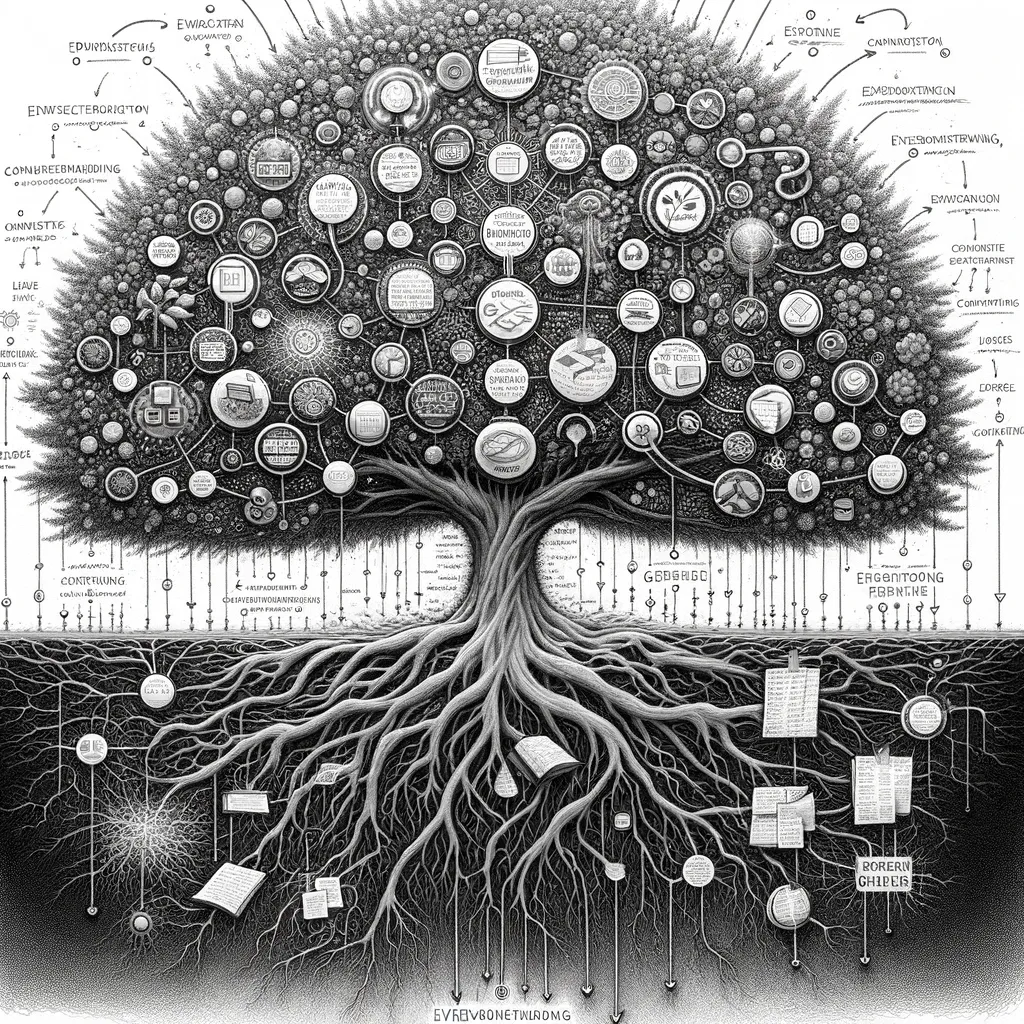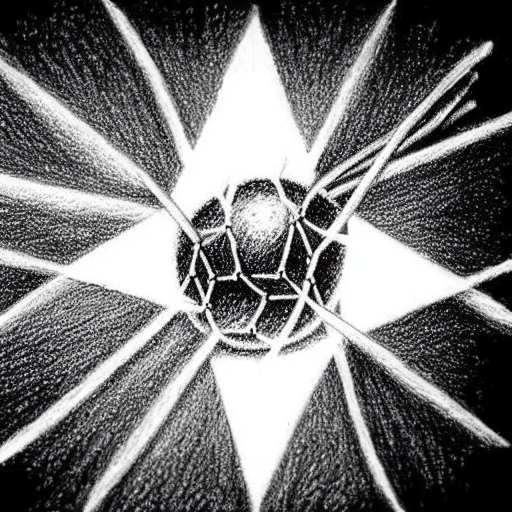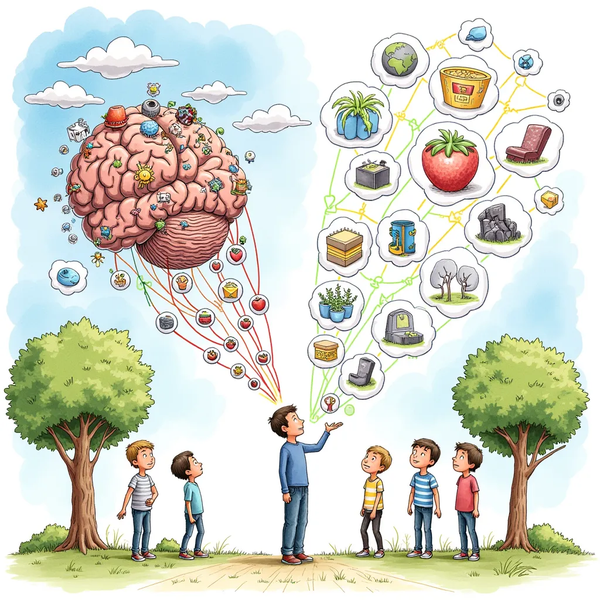Embracing Fluidity in Knowledge Management: The Cattle Approach to Ideas
Transform your ideas into a thriving ecosystem! Embrace the Cattle approach to Personal Knowledge Management. Let ideas grow, merge, and flourish.

In the evolving landscape of Personal Knowledge Management (PKM), the strategies we employ for note-taking, note-making, and sense-making play a crucial role in how we store, retrieve, and utilize information.
Treating ideas like cattle, rather than pets, offers an interesting perspective on managing our Personal Knowledge Graphs. This philosophy, inspired by the world of IT, encourages a more dynamic, and flexible approach to Knowledge Management, where ideas are not overly cherished but are allowed to evolve, expand, and integrate. This reflects the fluid nature of understanding and insight.
The Limitations of Over-Attachment in Knowledge Management
People treat certain pieces of knowledge or ideas as pets: precious, unique, and irreplaceable. This attachment can manifest as meticulously curated notes and rigidly organized systems that resist adaptation, reflecting a fear of losing the 'purity' of the original content.
While well-intentioned, this approach can significantly hinder the ability to synthesize new insights or adapt to evolving understandings, effectively siloing knowledge in a way that prevents it from reaching its full potential.
Advantages of the Cattle Approach in PKM
Adopting a cattle-like approach to Knowledge Management involves seeing each piece of information, note, or idea as part of a larger, dynamic system. This system is characterized by growth, cross-pollination, and the natural lifecycle of ideas, where some concepts mature into valuable insights while others may fall away as understanding deepens or as new theories replace older ones. There are multiple benefits to this approach:
- Adaptability and growth: Knowledge managed this way remains flexible and open to new connections and interpretations. It supports the natural evolution of understanding, allowing for the refinement and expansion of ideas over time.
- Detachment and objectivity: By not overly attaching to specific notes or ideas, there's a greater capacity for critical thinking and objectivity. This mindset encourages the reassessment of previously held beliefs in light of new information or insights.
- Enhanced integration and synthesis: Seeing knowledge as a fluid, interconnected system facilitates the linking of disparate ideas, fostering innovative syntheses and the emergence of higher-level insights.
Our brains function in the same way. It creates many mental models of reality, based on our current understanding. Over time, those models are refined or replaced, based on our experiences and observations. This mostly happens unconsciously, during our sleep. But the end result is the same, old ideas get replaced by new ones all the time.
Implementing the Cattle Approach in Personal Knowledge Management
Integrating this philosophy into one's Personal Knowledge Management routine involves different strategies, aimed at creating a rich, adaptable, and interconnected knowledge ecosystem:
- Flexible note-taking and note-making: Adopt methods that allow for easy modification, tagging, and linking of notes. Tools and techniques that support non-linear thinking and the dynamic association between ideas can be particularly beneficial (e.g., tools such as Obsidian, that support links and backlinks). As we'll see, Atomic notes are especially useful in this context.
- Sense-making as an ongoing process: Engage regularly with your knowledge base, not just to add new information but to re-evaluate and re-organize existing notes in light of new insights. This helps to maintain a relevant and useful Knowledge Graph.
- Cultivating a culture of continuous learning: Embrace the notion that understanding and knowledge are never static. Always remain curious when learning new things, exploring new domains, topics or perspectives.
- Consider your notes as Evergreen

The Power of Atomic Notes for Fluid Knowledge Management
Atomic notes are key when it comes to treating ideas like cattle.

Atomic notes, by their nature, are concise, and focused on a single idea, insight, or piece of information. This granularity not only makes notes easier to manage and retrieve but also significantly enhances the ability to connect those to other notes. You can learn more about those in my dedicated article:

I have also published an article explaining how to split long notes into atomic ones:

The whole is more valuable than the sum of its parts
Here are a few reasons why atomic notes play a crucial role in realizing the cattle approach to ideas...
Enhancing Adaptability and Evolution
Atomic notes are inherently flexible. By distilling information into its most basic, standalone elements, each note becomes a building block that can easily be reorganized, linked, or expanded. This adaptability is crucial for allowing ideas to evolve over time. As new information comes to light or understanding deepens, atomic notes can be updated, combined, or recontextualized without disrupting the coherence of the whole.
Facilitating Detachment and Objectivity
Creating atomic notes encourages a mindset of detachment and objectivity. By focusing on the essence of an idea rather than its implications or the emotional weight it may carry, it's easier to assess and integrate new insights. Objectivity is key in maintaining a system where ideas are evaluated on their merit and relevance, not on an emotional attachment or previous significance.
Over time, notes will come and go, expand or be replaced. And if each is just a tiny part of a whole, it's not that important. The system and all the other ideas it is composed of live on.
Promoting Integration and Synthesis
The fact that atomic notes are short and focus on a single idea makes it easier to identify possible connections between different pieces of information. Like DNA strands recombining to form new life forms, atomic notes can be linked in novel ways to generate insights that might not be apparent when dealing with more complex, entangled notes. This integration is at the heart of the cattle approach, where the cross-pollination of ideas is essential for innovation and deep understanding.
I have shared some thoughts about the downsides of writing long notes before:

Implementing Atomic Notes in your PKM system
To effectively incorporate Atomic notes into your PKM system, consider the following practices:
- Clarity and Conciseness: Each note should capture a single idea clearly and concisely. Avoid the temptation of including multiple thoughts or tangents in one note. Instead, create separate notes and connect those together.
- Linkability: Make use of metadata, tags, and links to connect atomic notes within your system.
- Link your Notes with Time: I find it useful to associate different points in the life of my notes with time. I keep track of when an idea enters my PKM system, and also when it evolves. This lets me be more objective about the information in my system. Older notes may be stable, but they may have been "proven wrong" by the current knowledge of the world (or my current opinions).
- Regular Review: Periodically revisit your notes. This not only refreshes your memory but also provides opportunities to refine, combine, or otherwise evolve your understanding.


Atomic notes are more than just a note-taking technique. I consider those as foundational for building a solid, scalable and maintainable Personal Knowledge Graph. By breaking down knowledge into its most essential components, atomic notes enable a level of flexibility, objectivity, and interconnectivity that is highly valuable.

Conclusion
The cattle approach to Personal Knowledge Management is a great mental model to think about while taking or making notes. Focus on the system as a whole, and not on each individual idea. Let those evolve, transform, morph, or disappear. It doesn't matter. The Knowledge Graph as a whole does. As I've argued, atomic notes can help a lot to implement this approach.
That's it for today!
About Sébastien
I am Sébastien Dubois. You can follow me on X 🐦 and on BlueSky 🦋.
I am an author, founder, and coach. I write books and articles about Knowledge Work, Personal Knowledge Management, Note-taking, Lifelong Learning, Personal Organization, and Zen Productivity. I also craft lovely digital products . You can learn more about my projects here.
If you want to follow my work, then become a member.
Ready to get to the next level?
To embark on your Knowledge Management journey, consider investing in resources that will equip you with the tools and strategies you need. Check out the Obsidian Starter Kit and the accompanying video course. It will give you a rock-solid starting point for your note-taking and Knowledge Management efforts.
If you want to take a more holistic approach, then the Knowledge Worker Kit is for you. It covers PKM, but expands into productivity, personal organization, project/task management, and more:
If you are in a hurry, then do not hesitate to book a coaching session with me:






